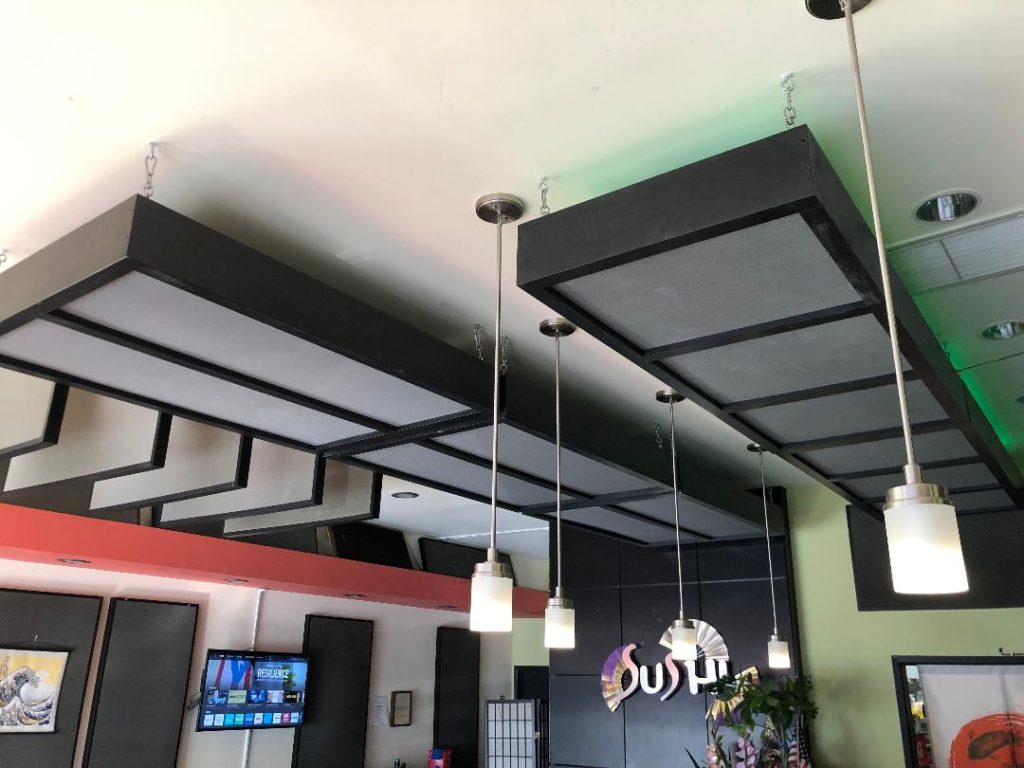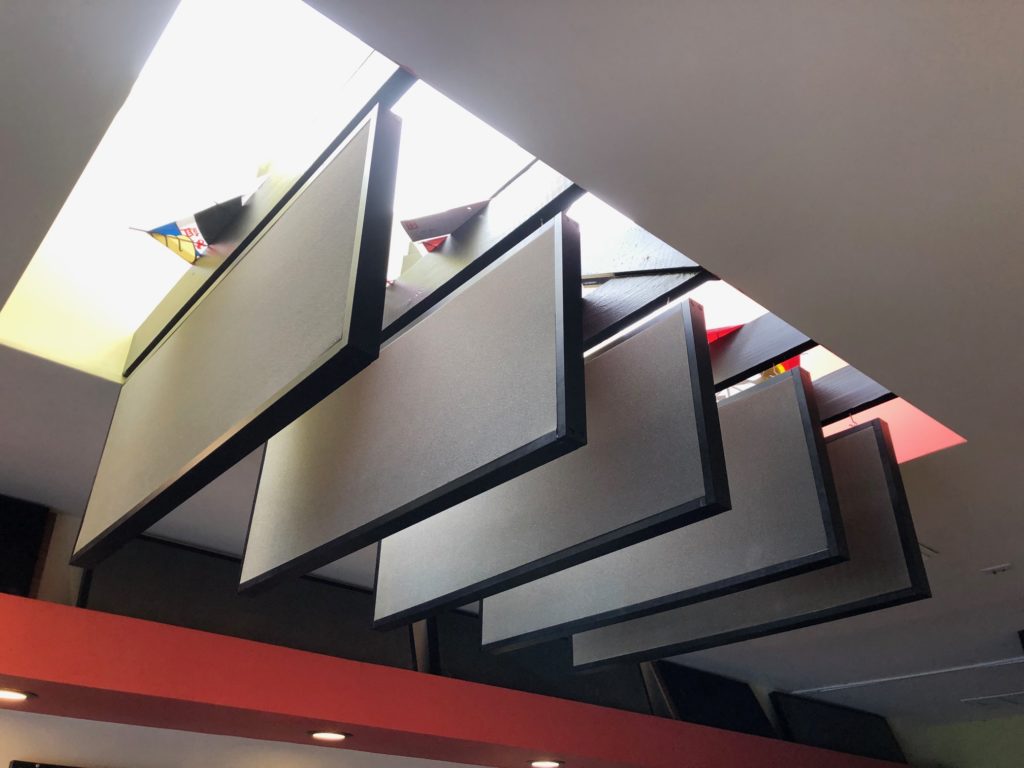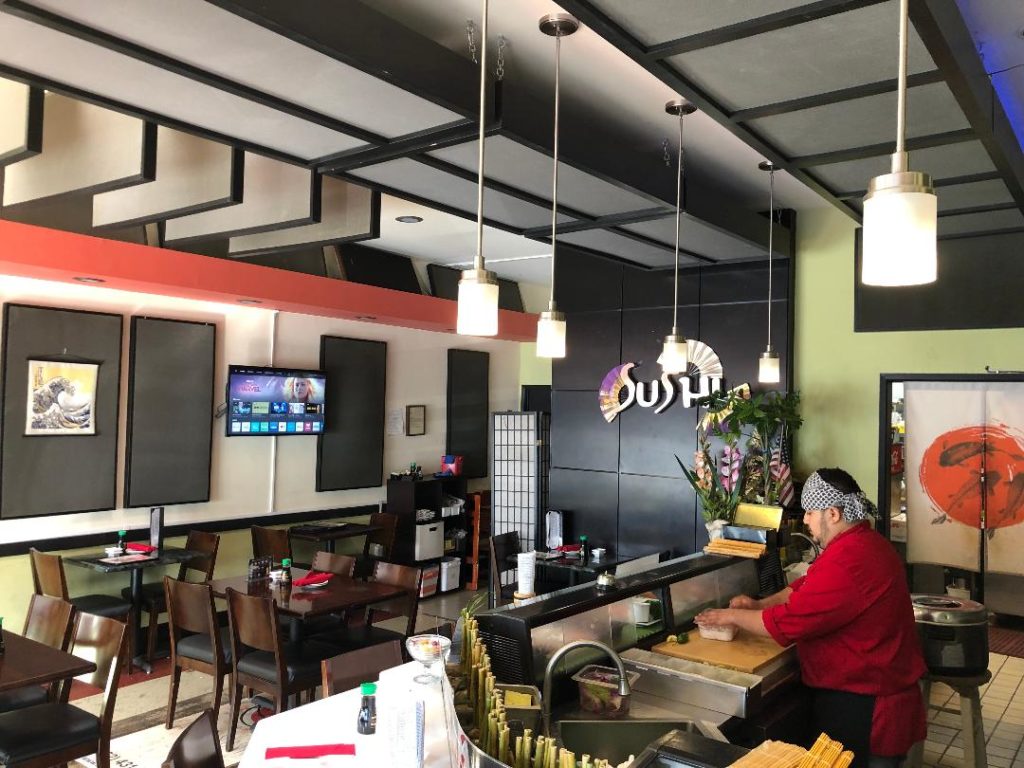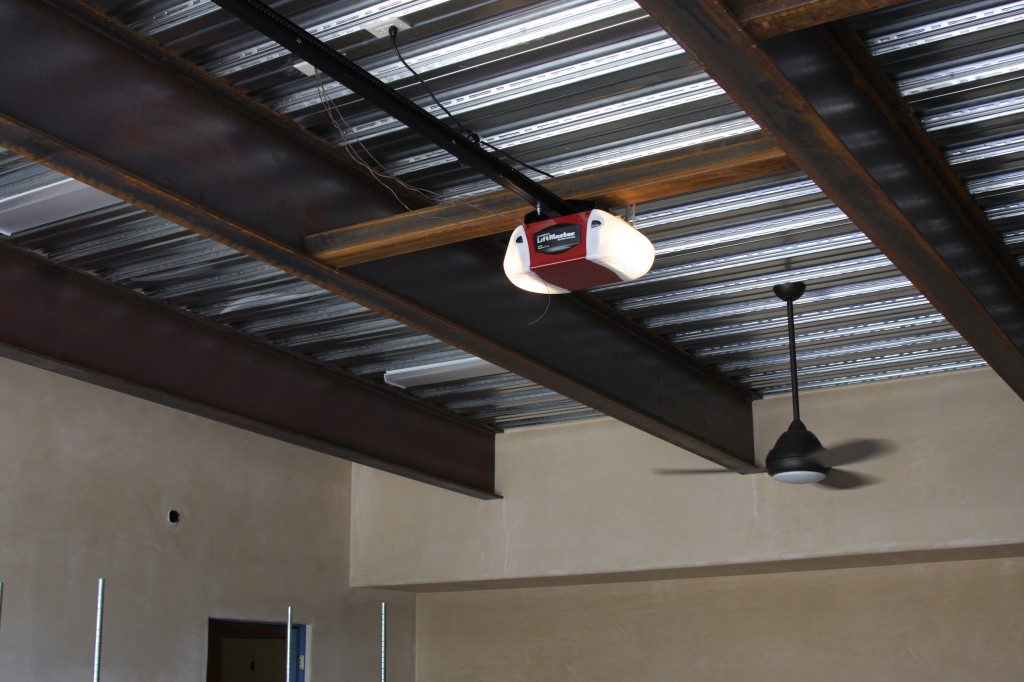Acoustic treatment for restaurants is one of the most overlooked elements of the restaurant trade and yet so vitally important. We see it every day and it’s amazing to me that people spend hundreds of thousands of dollars, millions of dollars on a restaurant, and they don’t consider the acoustics of the restaurant. We have treated many restaurants sine this blog was written. We have updated the content and photos to show what we have learned on 11/24/19.
How many restaurants have you been in that are so noisy that you can’t carry on a conversation with the person you’re with? You can’t hear the waitress or waiter take your order because the ambient noise level is so high or on the other side of it. How many restaurants, and this is a very small percentage but I have been in a few, where you can actually hear people smacking their lips eating their food? Those are two ends of the spectrum. Too noisy, not noisy enough if you will, I know not very scientific but those are our two ends of our spectrum. Neither one is acceptable, so we introduce acoustic treatment for restaurants.
What is our goal with acoustic treatment in restaurants?
To raise the noise floor or let the noise floor that exists be high enough, that we can hear people eating food, but not so high that we can’t hear speech. You have speech intelligibility and then you have music in many cases. All of these issues must be addressed in the design phase of the restaurant. For speech intelligibility, there is an index we must stay within. It is called the SII. Speech Intelligibility Index. It is a measure of how many words within a spoken sentence you actually here.
I see time and time again where people build restaurants and they do this, they do that and it’s all about looks and I get that people want to come into a building and eat food and that they like their surroundings, they like the food and all these things. But if you don’t get the acoustics right and I don’t know how big of an issue this is, to me it’s a big issue but I’m in the business so maybe it’s not a big issue to people to have a noisy restaurant.
I don’t know maybe they go there because the food is so good that it overwhelms the noise in the restaurant and they just don’t care. I don’t know, but for those of us that are sensitive to sound and noise, the restaurant reverberation times have to be taken into consideration at the design phase because once the restaurant is built and all the pretty things are put on the walls, and the ambiance of the restaurant is established, there’s no room left for room treatment. And room treatment, to manage reverberation which is what we’re talking about here, the reflections off all the walls take a lot of square footage. You have this restaurant with all these fancy nice things on the wall to generate some sort of look or appearance, theme if you will, but you are left with the inability to provide acoustic treatment for your restaurants.
So it’s really frustrating for people when we tell them how much surface area that they have to treat. “Well I can’t do that, I can’t cover up this ten thousand dollar painting or I can’t cover up this rug or this that or the other that’s hanging on the wall”. Well, then you’re going to have to live with your noise. Because there’s no other way to do it. The reflections off the surfaces of the restaurant, the walls and the floor and ceiling, are causing the problem. So those areas have to be treated.

Acoustic Fields Absorption Technology
There is No Magic Bullet
You have to put sound-absorbing material on those surfaces and to do that you have to give up space. Now we can blend it into the decor but it’s all going to be a fabric-based material. So you’re going to have to choose the fabrics that have the texture and the color that compliments your restaurant. Not difficult, there’s plenty of choices.The hard choice you have to make is, Can I give up the square footage? and most restaurants can’t or won’t, so they have to live with their noise. That’s just the bottom line and it’s so sad to see.

Acoustic Panels were hung from the ceiling to increase the Treatment Surface Area
We have to be able to hear 80% of each sentence spoken. We must be able to hear 8 out of 10 words spoke to have comprehension and understanding. An understanding between the waiter and the clients because each word of the order was heard. Have you ever been to a restaurant where you had to repeat your order because the background noise levels were so high you had to shout over them? We use a measure called SSI. It stands for the speech intelligibility index. It is a rating system on how many spoken words are heard. It uses a base of 10 words and requires that you hear 8 out of every 10 for comprehension and understanding to occur between human beings.
SSI Link:https://en.wikipedia.org/wiki/Intelligibility_(communication)
A Practical Example
I saw a restaurant chain the other day, 16 stores, 8,000 square feet. Each restaurant had no acoustical consideration given to noise at all. Multi-million dollar project. It makes no sense to me, I don’t understand it. I would think if I’m building a restaurant, noise management and noise control would be one of the first things I would consider, but it’s not. I find that appearance, theme, location and all of those things count more and that’s good if that’s the way it is. But don’t come to us at the end, the day after the building is built and all the ornaments put on the walls and then say, “well it’s too noisy what can we do?” because you’re not going to like the answer. You’re just not going like the answer.
I was just laughing with a customer the other day. He was like, well I can’t do that, I can’t cover up my twenty thousand dollars ceiling. And I said, “You spent twenty thousand dollars on this ceiling?” “Yeah those are all handmade tiles,” I said “Those are all handmade acoustic nightmares” and he’s like, “Oh I can’t cover those up,” I said “Well then you got to give me some walls” “I can’t do that either”.
And then he breaks down each wall, about, each wall could cost five thousand dollars. That wall cost X and each wall contributes 20% to the total problem. Treat 3 walls to solve 60%. Is 60% enough? Usually, no. We need 70% minimum and 80 is good. Well, I can’t help the guy. I want to. I want to help him because he has got a great looking restaurant but it’s just too noisy. I want to help him but I need a surface area and he won’t give up the pretty to manage noise. I understand the importance of pretty. However, a pretty but noisy place is not as well-received as a less pretty but quietly. In today’s’ world where noise is way past nuisance value, quiet is valued. Especially quiet where and when you eat. When we eat we like quiet. We can then taste more of our food with quiet. In today’s world, it is too noisy to taste.

Acoustic Fields Acoustic Treatment of Kaito Sushi Bar
Acoustic Treatment For Restaurants Takes Surface Area
You’ve got to give space or surface area to the acoustic guys that are going to solve your high reverberation time issues. It’s always about surface area. You have an x problem. You must have x square footage of surface area treatment. You’ve got to give the surface area. If you can’t give them surface area, they can’t pull rabbits out of hats. So back to the example, the guy said, “Well I could put a rug on the floor”. But restaurants really can’t do that because, why? Well, it’s because people are dropping food, people are walking in from outside from the street, tracking in dirt, etc. You have to have a surface area that’s easy to clean. Some restaurants have carpeting but most don’t. So that surface almost has to stay easily maintainable because of traffic and dirt and all of that and I understand that but you have a ceiling and then you have side and front walls.
And most restaurants that have the nice decor and nice ambiance and stuff like that, if they’d stepped back and taken a look at it at the design phase, in the beginning, they could have incorporated a room treatment into the design, they could have done that. They just didn’t. They just didn’t think about it, nobody suggested it or they got off and running with their ideas and their dreams, and I get that, but placing a band-aid on an arterial cut is not a solution and it’s a really difficult call for people.
Sound Absorption Panels for Restaurants: https://www.acousticfields.com/product/acoustic-panels/
2 to 3 Inches of Material Thickness is All That is Needed
I just always chuckle sometimes when a person sends me their room and I tell them how much square footage they need to cover, and it’s not thick, I mean two, three inches in thickness is usually the norm so we’re not talking about a lot of thickness but surface area. Each material has an absorption coefficient, each material does a certain amount of absorption and you just need so much of that material to achieve a lower reverberation time. It’s just physics so it’s not magic but the answer for the surface area is always larger than the commitment of space they’re willing to give, so they have to live with the noise.
In Summary
To those in the restaurant trade, maybe I’ve come off a little bit Gordon Ramsey in the above discussion and that’s not for everybody. But I take these issues seriously and only want the best acoustic treatment for your restaurants. So if in doubt, please call me on 520–392–9486 or email info@acousticfields.com and I will happy to take a look at your restaurant layout for you.
Thanks
Dennis








